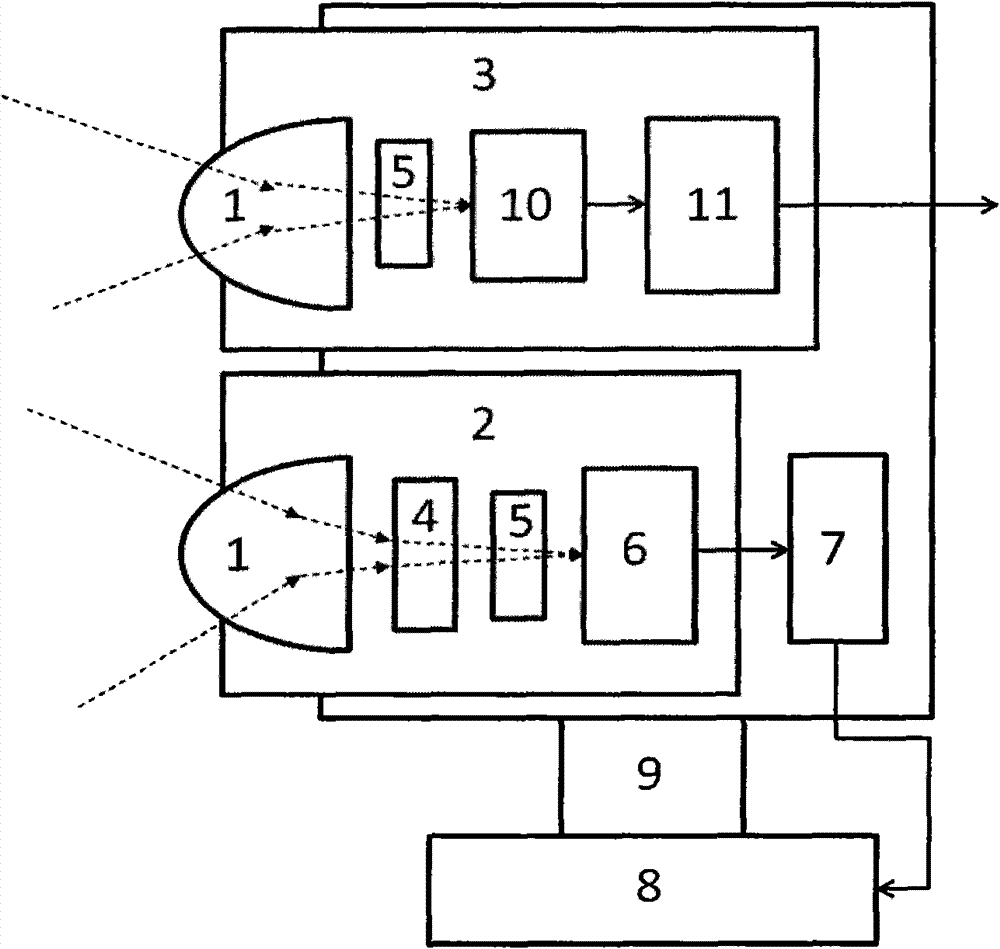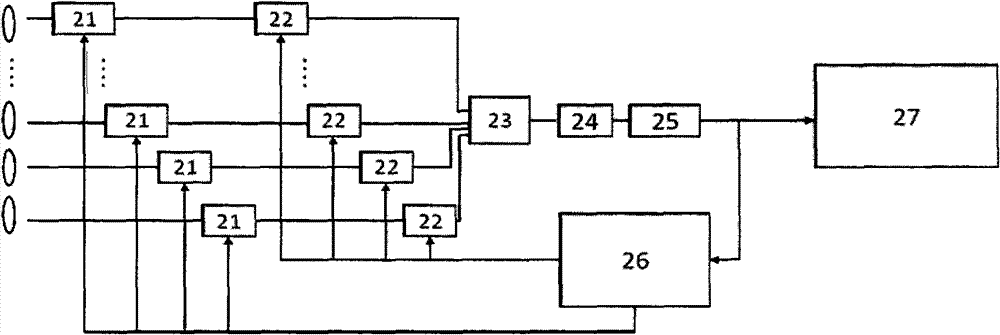Receiving system in wireless optical communication and signal receiving method thereof
A wireless optical communication and receiving system technology, applied in the field of optical communication, can solve the problems of filter center wavelength drift, increase bandwidth, low integration, etc. The effect of structural flexibility
- Summary
- Abstract
- Description
- Claims
- Application Information
AI Technical Summary
Problems solved by technology
Method used
Image
Examples
Embodiment Construction
[0087] The wireless optical communication receiving system structure based on array receiving and coherent combination provides a receiving scheme with high sensitivity and high integration for wireless optical communication. Its principle structure is as figure 2 shown, including:
[0088] A focusing lens array couples the spatial optical signal into the optical waveguide array or the optical fiber array.
[0089] An optical waveguide array or an optical fiber array serves as a transmission path for received optical signals. The output end of the optical waveguide array or the optical fiber array is connected to a group of optical signal delayers 21 . The optical signal delayer can be a commercial optical fiber adjustable true delayer, or a true delay module based on the slow light effect, which is used to adjust the signal delay of each optical signal, so that each optical signal carried The telecommunication number elements are basically aligned. The output ends of eac...
PUM
 Login to View More
Login to View More Abstract
Description
Claims
Application Information
 Login to View More
Login to View More - R&D
- Intellectual Property
- Life Sciences
- Materials
- Tech Scout
- Unparalleled Data Quality
- Higher Quality Content
- 60% Fewer Hallucinations
Browse by: Latest US Patents, China's latest patents, Technical Efficacy Thesaurus, Application Domain, Technology Topic, Popular Technical Reports.
© 2025 PatSnap. All rights reserved.Legal|Privacy policy|Modern Slavery Act Transparency Statement|Sitemap|About US| Contact US: help@patsnap.com



